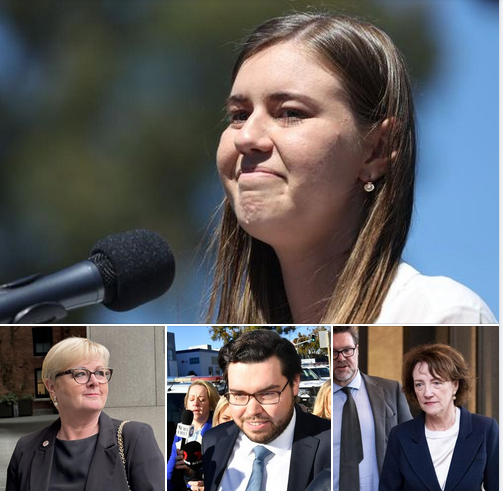A wonderful piece in the Australia Newspaper by Stephen Rice.
From the moment she decided to use the media instead of the police and the courts to tell her story, Brittany Higgins has been given extraordinary latitude to say whatever she wishes, whenever she wishes.
Just as Linda Reynolds stepped into the witness box to begin her evidence on Monday, Brittany Higgins launched her own dramatic early entry into the case, posting on Instagram the cover of a new book with the subtitle How the Law Silences Women. “Pertinent reading”, Higgins headlined the post.
Her timing was impeccable, albeit two weeks before it was her turn to take the stand. Higgins sees herself as a disrupter, and her social media hijacking of the event achieved its purpose, dominating media coverage of the day Reynolds had hoped would provide some clear air to state her case. Higgins elbowing her way to the forefront of the news coverage of the case delighted her loyal Instagram base, but in the real world her intervention highlighted the absurdity of her message.
Higgins has not been silenced, by the law or by anyone else. It is difficult to think of any complainant in any criminal or civil matter who has been more outspoken about their own case – or who has been more indulged by the legal system in flouting basic rules of fairness regularly enforced on others. That perception was reinforced this week when judge Paul Tottle appeared to let Higgins’s provocative post through to the keeper, suggesting he would deal with it in submissions “when the time comes”.
Higgins’s lawyer, Rachael Young SC, said the post had nothing to do with the case, perhaps with her tongue planted firmly in her cheek, but promised to “speak to” her client.
The truth is, Higgins has been snubbing her nose at the legal system for years and getting away with it. From the moment she decided to use the media instead of the police and the courts to tell her story, Higgins has been given extraordinary latitude to say whatever she wishes, whenever she wishes – all the while claiming she’s being gagged. When Higgins delayed giving a formal statement to police, causing significant problems for the investigation, she and her partner David Sharaz were organising with journalists and Labor politicians to tell her story in the most explosive and politically damaging way possible for the Morrison government.
Television and online news interviews. The National Press Club. The Women’s March. The #MeToo movement. A $325,000 book deal. An unending stream of social media posts. Higgins wasn’t just given a voice – she was handed a megaphone.
When senior police officer Scott Moller asked that Higgins stop doing media that could prejudice Bruce Lehrmann’s criminal rape trial, Victims of Crime Commissioner Heidi Yates told him: “She can’t, Scott – she’s the face of the movement now.”
This is an extraordinary case and why has she been given so much lattiude to say what she likes and to control in some ways the speed and direction of the issues?

